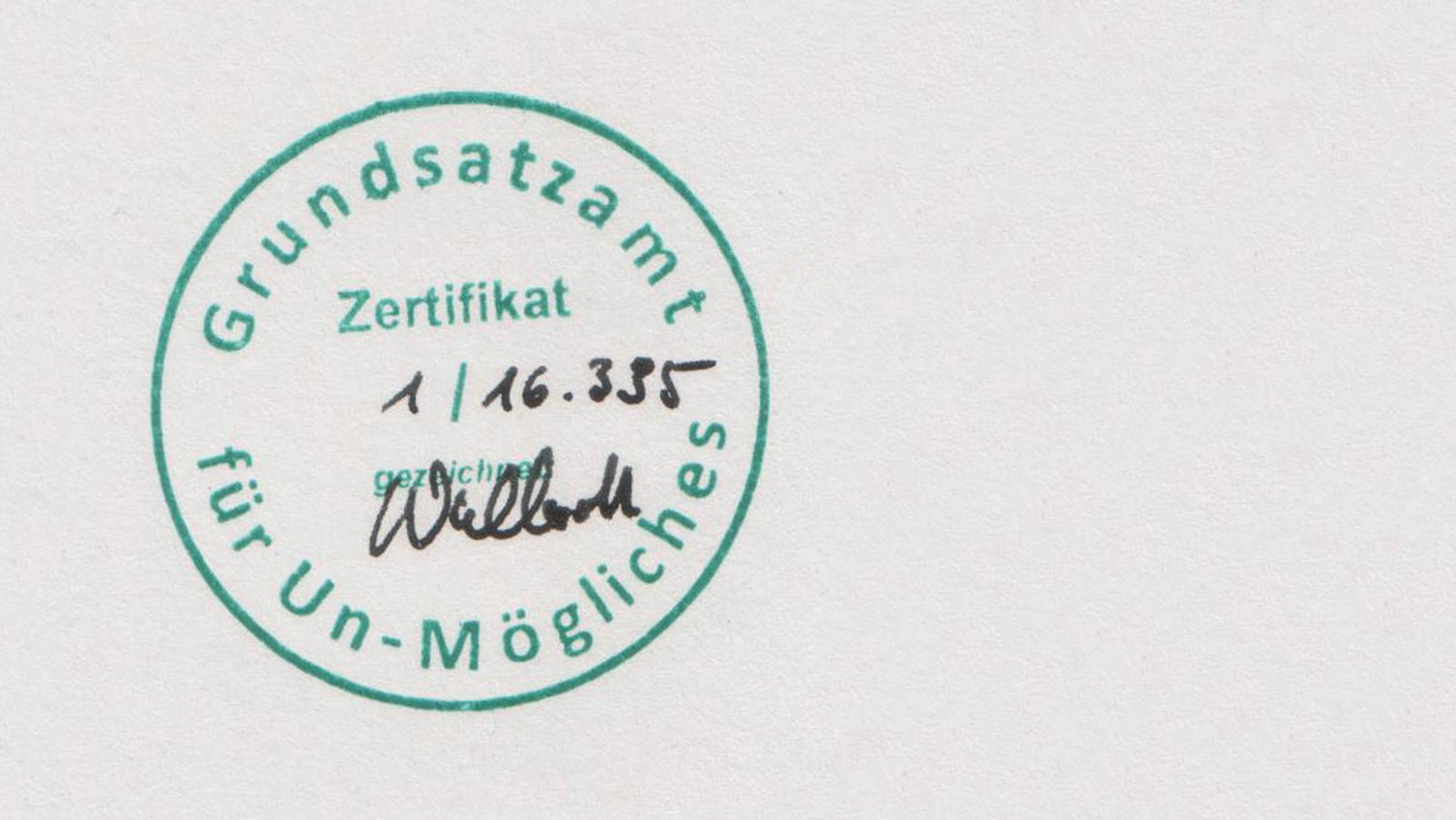Art and Science: Sustainably different
2021-04-26 "Scientific knowledge has limits, especially when it comes to researching and shaping multi-layered contexts such as sustainability," says Dr Harald Heinrichs. In his recently completed project, the professor of sustainability and politics uses an art-science approach to overcome these barriers. In the process, the impossible was given top priority.
Daniel Hoernemann's desk stood right at the entrance of the Wathlingen town hall. On the secretary's desk were a typewriter, a box of notes and an ink pad. Everything an artist needs to irritate. The performer and visual artist from Bonn did not work on classical administrative issues, he was the head of the Office of Principles for the Impossible. This work was part of the experimental model project "Artistic-Scientific Political and Public Consultation" led by the sociologist Harald Heinrichs. For several years now, the researcher has been working on combining art and science in order to gain holistic insights into human experience: "Science analyses; art reflects", Harald Heinrichs summarises.
Together with his team of researchers, the scientist collected data on the sustainable development of the municipality in the joint municipality of Wathlingen/Lower Saxony. What are the expectations? Where lies the potential for change? Where would citizens like to get involved? Important results were, for example, the desire for less "administration-centricity" and more community involvement, as well as a sustainable transport concept combined with a stronger public transport and cycle path network. The three villages of the joint municipality are connected by a rural road. Within the data collection, the researchers also analysed administrative documents dealing with sustainability. "At this point, in the policy consultation, there would be a final report with the scientific analysis. That would be the end of our work," explains project leader Harald Heinrichs. For him, however, research only answers part of the questions in sustainability. "There is still a bodily, emotional dimension of the human being that we cannot adequately depict with our methods, but which is of great importance for the quality of life," explains Harald Heinrichs.
This is where art comes into play. The Office of Principles for the Impossible was not only a social sculpture, but also initiated something concrete. "Administrative staff and citizens have presented topics there that they previously considered unrealisable. This is how something is set in motion," describes Harald Heinrichs. Concerns that were raised were recorded in writing and given a stamp of approval by the Office of Basic Principles for the Impossible. The artistic interventions took up results from the research. However, Daniel Hoernemann also thematised his own impressions from the joint municipality. The four social sculptures in the research project also include the final festival and the sustainability day "ichduwiralle". The research results are expected to be presented at a vernissage in Wathlingen in the summer. "We have deliberately not chosen a scientific presentation. Art should provide greater visibility and experience," explains Harald Heinrichs. The results will remain as pictures in the town hall and will be hung like in a painting exhibition: "We want to open perspectives, stimulate thinking and imagination. This is especially relevant for sustainable development, which is not only about analysis but also strongly about shaping the future."
Contact
Prof. Dr. Harald Heinrichs
Universitätsallee 1, C11.226
21335 Lüneburg
Fon +49.4131.677-2931
harald.heinrichs@leuphana.de

